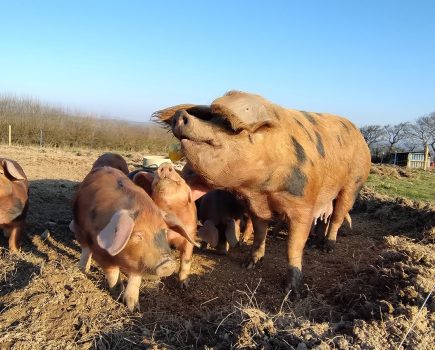Growers are now able to extend the season for growing strawberries, says Brian Callaghan
Traditionally, strawberries were planted in autumn, allowed to establish for a year and cropped some eighteen months after planting. Careful soil preparation, layers of straw to protect developing fruit all for a six to eight week picking season before the plants needed trimming and left to develop the reserves needed for the following year`s fruit. Things have changed. Developments in plant breeding, growing facilities and techniques now allow growers to extend the strawberry harvest well past the Wimbledon season.
Container Growing
Soil-less growing media, plastic pots and garden centres led to the introduction of container-grown plants in the 1960`s. This has since spread to non-ornamentals with pot grown strawberries available all-year-round, available for purchase when time and space allows rather than when the bare-rooted plants can be moved without damage.
A natural progression is to keep the plants in containers for the whole of their productive life. The cold, damp soils hated by strawberries are avoided by the use of free-draining composts and dedicated containers which can be positioned to maximize available sunlight needed to ripen fruit.
Any size and shape of container can be used as long as it is big enough to accommodate the roots and does not make watering too burdensome. Once the crop becomes unproductive simply empty the container and replace with fresh plants and media thus avoiding build-ups of potentially damaging pest and diseases.
“Table Top” Growing
Originating in the commercial sector, `Table Top` growing consists of sturdy frameworks which support long channels, roughly one metre above the ground, containing trickle-fed, compost in which the strawberries are grown. This system provides all the benefits of container growing along with a working height which allows all growing operations to be carried out at a comfortable working height and therefore quicker and cheaper.
Although labour costs may not be a major consideration, the benefits of growing strawberries free of soil-borne pests, diseases and weeds, with no need to place straw under the fruits and minimal slug damage, might hold some appeal. There are many types of “table top” growing systems available for purchase, but anything which performs the function, such as large guttering, channels, plastic crates supported by building blocks, can be utilised at relatively low cost and provide sufficient scope to satisfy the ambitions of the hardened fabricator (bodger?) in all of us.
Extending The Season
Pot up the runners in a soil-based compost in spring and allow the plants to establish outdoors for the rest of the summer. Once temperatures fall, move the plants into an unheated glasshouse, or tunnel, and water sparingly taking care to keep the leaves dry. Any pests and diseases carried on the plants will continue to develop indoors while their outdoor cousins perish, so check regularly and remove any infected and fallen vegetation immediately.
The plants will start into growth in early spring and require more frequent watering plus a fortnightly application of a tomato feed-type liquid fertiliser such as comfrey juice. Strawberry flowers require insect pollination and a combination of the confines of the tunnel, or glasshouse, and the flowers appearing earlier than outdoors might lead to low levels of pollination. Keep a small, soft paintbrush nearby and lightly pass over the flowers to aid the spread the pollen.
Greater yields of strawberries are still possible using traditional methods and also avoid the decisions about use of soil-less growing media and flavour of fruit out of season. Do not discount the newer approaches, however, as the opportunities they provide for those restricted by space, soil conditions, location and aspect may mean the difference between growing this valuable crop and not.
Image(s) provided by:
Archant







